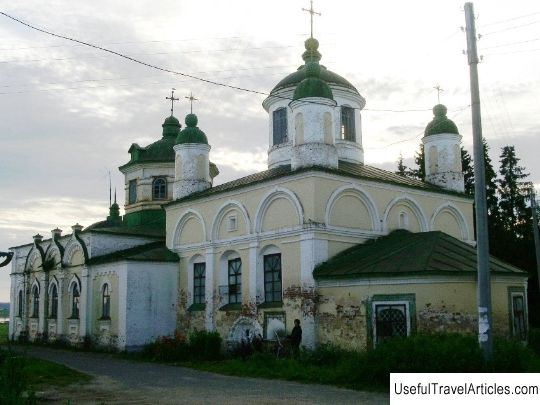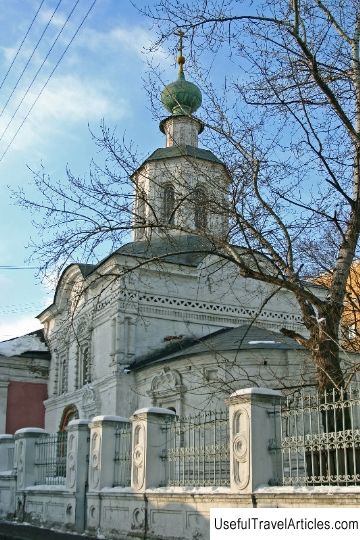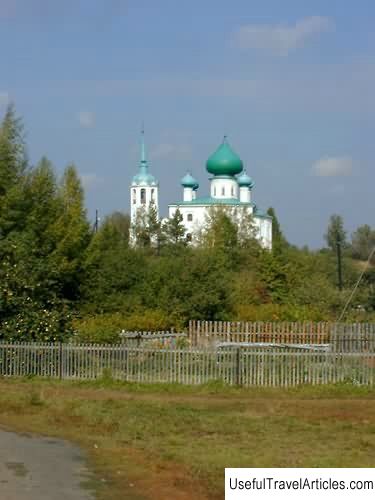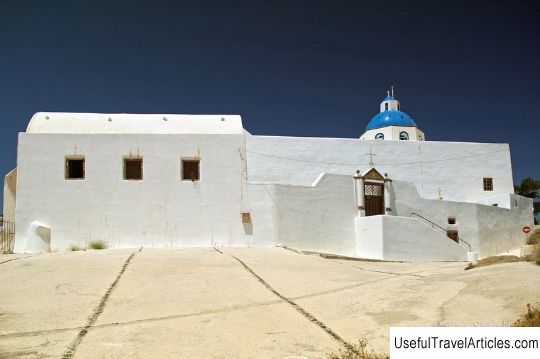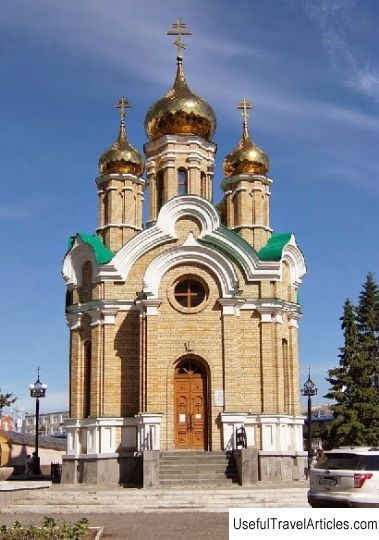St. John the Baptist Monastery description and photos - Russia - North-West: Veliky Ustyug
Rating: 7,5/10 (100 votes) St. John the Baptist Monastery description and photos - Russia - Northwest: Veliky Ustyug. Detailed information about the attraction. Description, photos and a map showing the nearest significant objects. Photo and descriptionOne of the famous Veliky Ustyug monasteries is the St. John the Baptist Monastery, located in the Gora microdistrict. The structure of the John the Baptist Monastery included: the Church of John the Baptist, the Cathedral of John the Baptist, which suffered a devastating fire in 1921, as well as the Brothers' cells. The monastery was founded in 1262. Its origin and construction is closely connected with the Tatar Baskak Buga. At that time, the position of the Russian people was very depressing. Buga, then living in Ustyug, took the daughter of a respectable resident Maria as a tribute. Many Russian princes took up arms against Baskaka. Then he came to Mary and asked her to save him. Mary advised them to be baptized, after which they got married. After the baptism, Bug received the name John. According to the legend, he built a church in the name of John the Baptist, and then the John the Baptist monastery. The three-tiered bell tower of the monastery faced the city and was crowned with a cross and an apple. A tiled staircase was built along the side of the mountain, and under the mountain there was a small wooden chapel, which no longer exists. In the chapel there was a bowl, lined with marble, into which water flowed from a spring. Also in the monastery there was an almshouse for old women, a hospital, a bakery and a house designed to receive wandering people. The inhabitants of the monastery were engaged in sewing and gold sewing crafts. A spacious building was built for master work on the south-western side, which burned down in 1900 and in 1904 was rebuilt according to the project of V.N. Kuritsin In 1888, a diocesan women's school was opened on the territory of the monastery. During 1899-1913, when Abbess Paisia was the abbess of the monastery, the monastery underwent global renovation and construction work, during which a new church was laid. After the October Revolution, a craft school with a dormitory began its work in a building intended for workshops, but it was soon closed. The main monastery church has not survived to this day and was considered the only church in Veliky Ustyug built in early 20th century. Kuritsin Vladimir Nikolaevich became the architect of the temple, the project of which was approved by the Holy Synod in 1908. The first foundation stone of the temple took place on May 25, 1909. In the architectural sense, the building of the monastery was a symmetrically executed cross. There were four entrances to the temple: two entrances were intended for service purposes, and the other two were considered the main entrances for parishioners. Each of their entrances had its own porch with a dome. According to the project, the central dome had a helmet-like end, but in fact, it was built in a more elongated upward shape. In the central part of the dome there was a wide strip not trimmed with iron. In this case, there are several options for the development of events: first, the belonging of the Church of John the Baptist was especially emphasized, as indicated by the beheading of the temple head; the second - it was assumed that there was a light strip that could work over long distances; the third option - they simply did not have time to cover the temple dome with iron, as planned, because the latter was seized in 1919, even during the reign of Soviet power. In the northern part of the temple refectory, there was the ultimate altar, consecrated in honor of the Ecumenical Icon of the Mother of God and separated from the south by the iconostasis, between the columns of the image of the Great Martyr Theodore Stratilates. In the northern part of the porch there was a border in the name of the Holy Great Martyr Barbara, which housed two most beautiful images of the Annunciation of the Virgin and the Life-Giving Trinity with the life of Abraham, painted in the late 16th and early 17th centuries. The fate of the temple turned out to be very tragic: in the summer of July 11, 1921, a fire broke out, due to which not only the forests burned down, but the dome of the newly built temple collapsed. Years later, on March 10, 1927, it was decided to break down all the remains of the burnt-out church. At that time, a large city lost its original structure from all sides,    We also recommend reading Market square description and photo - Ukraine: Lviv Topic: St. John the Baptist Monastery description and photos - Russia - North-West: Veliky Ustyug. |
